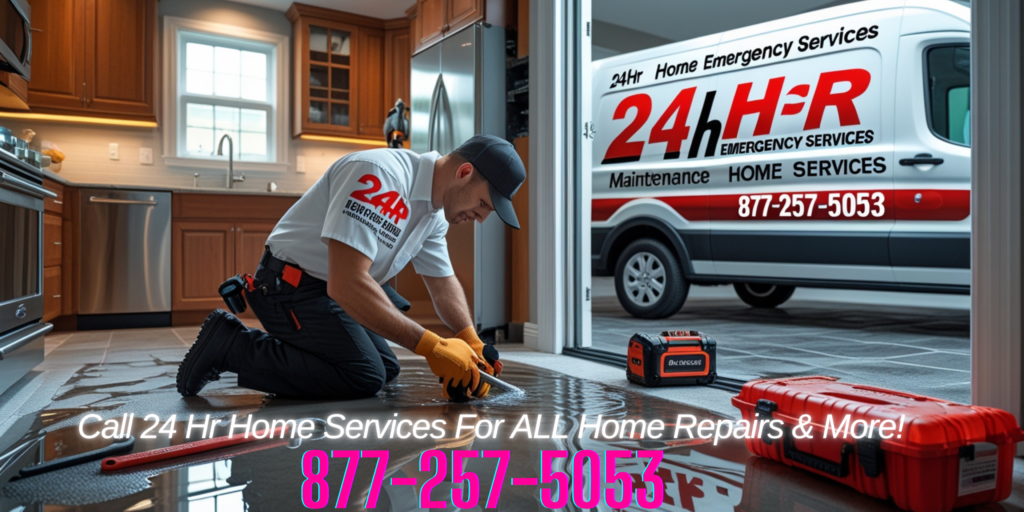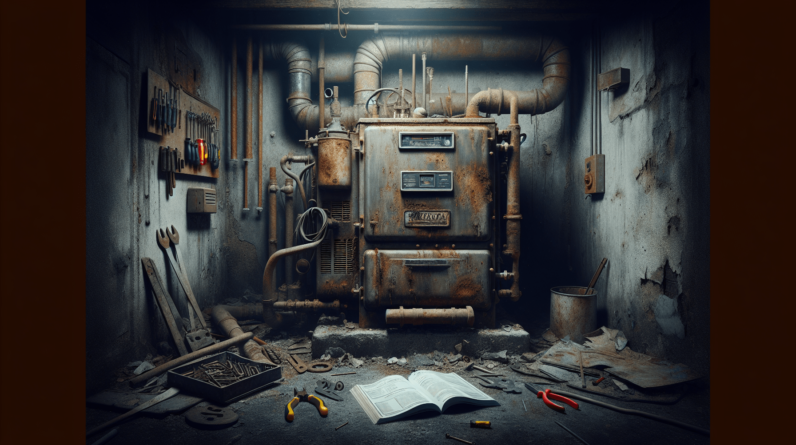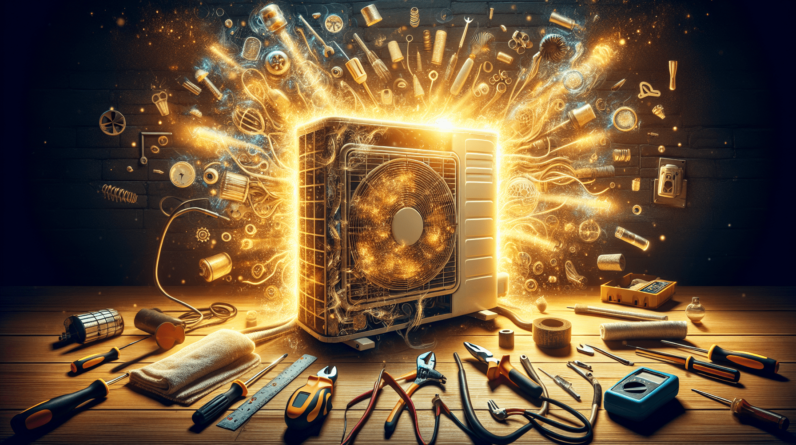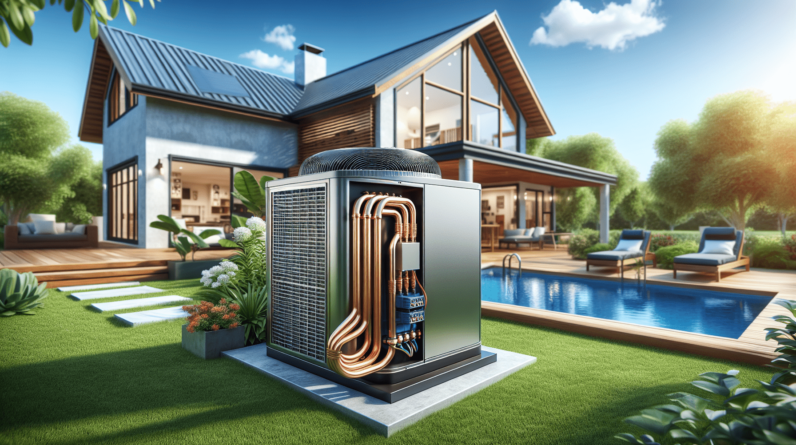
So, you’ve found yourself in a not-so-ideal situation – a burst pipe. We all know how frustrating and messy that can be. But fear not, because in this article, we’re going to explore the best way to seal a burst pipe. Whether you’re a seasoned DIY enthusiast or a complete novice when it comes to plumbing, we’ve got you covered. So grab a cup of tea, sit back, and let’s dive into the world of pipe sealing solutions.
Types of Burst Pipes
Frozen Pipes
Frozen pipes are a common cause of burst pipes, especially in colder climates. When water freezes inside the pipes, it expands, putting pressure on the pipe walls and causing them to crack or burst. This is a significant concern during winter months when temperatures drop below freezing. It is crucial to take preventive measures to protect your pipes from freezing.
Corroded Pipes
Corrosion is another leading cause of burst pipes. Over time, pipes can deteriorate due to chemical reactions between the water and the materials they are made of. Corrosion weakens the pipe walls, making them more susceptible to cracking and bursting. Older homes with aging plumbing systems are more prone to this problem. Regular maintenance and inspections can help identify corroded pipes before they become a major issue.
High Water Pressure
Excessive water pressure can also lead to burst pipes. When the water pressure in the pipes exceeds the recommended levels, it puts strain on the pipe walls, causing them to burst. This can happen due to a faulty pressure regulator or issues with the municipal water supply. Monitoring and adjusting water pressure can help prevent burst pipes caused by high water pressure.
Tree Root Invasion
Tree root invasion is a less common but still significant cause of burst pipes. Tree roots seek out moisture and nutrients, and they can penetrate pipes in their quest for water. As the roots grow, they can exert pressure on the pipes, leading to cracks and bursts. If you have trees or shrubs near your plumbing system, it is essential to monitor for any signs of root intrusion.
Detecting a Burst Pipe
Visible Water Leakage
The most obvious sign of a burst pipe is visible water leakage. If you notice water pooling or dripping where it shouldn’t be, it is a strong indication of a burst pipe. Check for wet spots on ceilings, walls, or floors, and inspect the plumbing fixtures and pipes for any signs of water leakage. Acting quickly when you spot visible water leakage can prevent further damage.
Decreased Water Pressure
A sudden decrease in water pressure can be a sign of a burst pipe. If you notice faucets and showerheads emitting weaker streams of water than usual, it may indicate a compromised pipe. Test multiple faucets and fixtures throughout your home to determine if the low water pressure is isolated or affects the entire plumbing system.
Unusual Sounds
Another way to detect a burst pipe is by listening for unusual sounds. If you hear hissing, gurgling, or banging noises coming from your plumbing system, it may indicate a burst pipe. These sounds can occur due to the escaping water or the pressure fluctuations caused by the leak. Pay attention to any unusual sounds and investigate the source to identify a potential burst pipe.
Water Discoloration
Water discoloration can be a warning sign of a burst pipe. If you notice rusty or discolored water coming out of your faucets or shower, it may indicate that a pipe has burst and is contaminating the water supply. Discolored water can also have a foul odor. If you experience any changes in water color or quality, it is crucial to address the issue promptly.
Immediate Steps to Take
Shut Off the Main Water Supply
As soon as you suspect a burst pipe, it’s important to shut off the main water supply to your home. Locate the main shut-off valve, which is typically located near the water meter or where the main water line enters your property. By turning off the main water supply, you can prevent further water damage and flooding while you assess and address the burst pipe.
Open Faucets to Drain Remaining Water
After shutting off the main water supply, open all the faucets in your home to drain any remaining water from the plumbing system. By allowing the water to flow out, you reduce the pressure on the pipes and minimize the amount of water that could potentially damage your property. Make sure to drain the water into a suitable container or outdoors to avoid additional water damage.
Turn Off Electrical Supply to Affected Area
If the burst pipe is located in an area with electrical outlets or appliances, it is crucial to turn off the electrical supply to that area. Water and electricity are a dangerous combination, and any contact can result in electrocution or serious injuries. Locate the circuit breaker or fuse box and switch off the relevant circuit to ensure safety until the burst pipe is resolved.
Temporary Fixes
Epoxy Putty
Epoxy putty is a quick and reliable temporary fix for a burst pipe. This two-part epoxy compound hardens when mixed together and can be applied directly to the damaged area of the pipe. It creates a strong seal that temporarily stops the water leak. Epoxy putty can be found at most hardware stores and is easy to use, making it a convenient solution until a permanent fix can be implemented.
Rubber Pipe Couplings
Rubber pipe couplings, also known as repair couplings or flexible couplings, are another temporary fix for burst pipes. These couplings are designed to connect two sections of pipes and provide a watertight seal. They can be easily installed by sliding them onto the damaged pipe and tightening the clamps. Rubber pipe couplings are a versatile solution that can be used on various pipe materials and sizes.
Pipe Repair Clamps
Pipe repair clamps are metal clamps that wrap around the affected area of a burst pipe to provide a temporary seal. They consist of a rubber gasket and a metal band that can be tightened using bolts or screws. Pipe repair clamps are suitable for leaks and small cracks in pipes and can provide a temporary solution until a permanent repair can be carried out.
Pipe Wraps
Pipe wraps, also known as self-fusing silicone tape, are flexible tapes that bond to themselves when stretched and wrapped around a pipe. They provide a temporary seal that protects against water leakage. Pipe wraps are easy to use and do not require any special tools or adhesives. They are a convenient option for minor burst pipes or leaks and can withstand high levels of pressure and temperature.
Preventing Further Damage
Protect Surrounding Area
When dealing with a burst pipe, it’s essential to protect the surrounding area to minimize damage. Move any furniture, electronics, or valuable items away from the affected area to prevent water damage. Use towels, buckets, or plastic sheets to contain the water and direct it towards a drain or outside. Taking quick action to protect your belongings can help minimize the impact of the burst pipe.
Remove Wet Materials
To prevent further damage and the growth of mold or mildew, it is crucial to remove any wet materials from the affected area. This includes carpets, rugs, furniture, and any other porous materials that have been soaked with water. Promptly drying out the area will help prevent the spread of water damage and create a safer environment.
Use Fans and Dehumidifiers
To aid in the drying process, use fans and dehumidifiers in the affected area. The airflow from fans helps evaporate moisture, while dehumidifiers remove excess humidity from the air. This combination promotes faster drying and reduces the risk of mold growth. Keep the area well-ventilated by opening windows and doors to allow fresh air circulation.

Addressing Mold Growth
If the burst pipe has resulted in water damage that has been present for more than 24-48 hours, there is a high risk of mold growth. Mold can cause various health issues and further damage to your property. In such cases, it is important to contact a professional mold remediation specialist to assess and address the mold problem.
Permanent Solutions
Replacing Damaged Section of Pipe
One of the most effective permanent solutions for a burst pipe is to replace the damaged section of the pipe. This solution ensures that the integrity of the plumbing system is fully restored. Depending on the extent of the damage and the location of the burst, a professional plumber may need to remove a section of the pipe and replace it with a new one.
Soldering Copper Pipes
Soldering copper pipes is a common method used in plumbing to create secure and watertight connections. This technique involves heating a copper joint with a torch and applying solder to create a strong bond. Soldering is typically performed by professional plumbers or individuals with experience in plumbing repairs. It is a reliable and long-lasting solution for burst pipes in copper plumbing systems.
Patch Repair with Plumbing Tape
For minor bursts or small leaks in pipes, patch repair with plumbing tape can be a viable permanent solution. Plumbing tape, such as self-amalgamating tape or silicone tape, can be wrapped around the damaged area to provide a tight seal. This method is relatively easy and cost-effective, making it a suitable solution for temporary repairs until a more permanent fix can be carried out.
Using Compression Couplings
Compression couplings are another option for permanent repairs of burst pipes. These couplings consist of two halves that are tightened together, compressing a rubber gasket between them to create a watertight seal. Compression couplings are versatile and can be used with various pipe materials, making them a practical choice for permanent repairs.
Calling a Professional Plumber
When to Seek Professional Help
While there are temporary and DIY solutions for burst pipes, there are instances when it is best to seek professional help. If the burst pipe is extensive, located in a hard-to-reach area, or part of a complex plumbing system, it is advisable to call a professional plumber. Professional plumbers have the experience, knowledge, and tools to handle complex repairs safely and efficiently.
How to Choose a Reliable Plumber
When selecting a professional plumber, it is important to consider their qualifications, certifications, and experience. Look for plumbers who are licensed and insured to ensure that they meet industry standards. Read customer reviews and ask for references to gauge their reliability and quality of work. Obtaining multiple quotes and comparing prices can also help you find a reputable plumber within your budget.
Cost Considerations
The cost of hiring a professional plumber for burst pipe repairs can vary depending on several factors. These include the extent of the damage, the location of the burst, the complexity of the plumbing system, and the plumber’s rates. It is important to discuss the details of the repair with the plumber beforehand to get an accurate estimate of the costs involved.
Warranty and Guarantees
When hiring a professional plumber, inquire about their warranty and guarantees for the repair work. A reputable plumber should stand behind their work and offer warranties on their services and the materials used. Having a warranty provides peace of mind knowing that you are protected in case any issues arise after the repair.
DIY vs Professional Help
Factors to Consider
Deciding between DIY repairs and professional help for a burst pipe depends on several factors. Consider the complexity of the repair, your familiarity with plumbing systems, the extent of the damage, and your available time and resources. While smaller, straightforward burst pipes may be suitable for DIY repairs, it is crucial to assess your abilities and the potential risks involved before undertaking the repair yourself.
Tools and Skills Requirement
Repairing a burst pipe requires specific tools and skills. DIY repairs may require tools such as pipe cutters, soldering equipment, wrenches, and sealing materials. Additionally, familiarity with plumbing systems, pipe installation techniques, and safety precautions is essential. Assess whether you have the necessary tools and skills, or if you would prefer to rely on the expertise of a professional plumber.
Safety Precautions
Working on burst pipes can pose safety hazards, especially with the presence of water and potential electrical appliances nearby. It is important to prioritize safety when carrying out repairs. Professional plumbers are trained in handling these risks and have the necessary safety equipment and procedures. If you are uncertain about your ability to safely repair a burst pipe, it is recommended to seek professional help.
Time and Cost Comparison
DIY repairs may be more time-consuming and labor-intensive compared to hiring a professional plumber. Consider the time and effort required to fix the burst pipe yourself, as well as the availability of the materials and tools needed. Additionally, calculate the cost of the materials and compare it to the cost of hiring a plumber. Sometimes, the combination of time, effort, and cost makes professional assistance the more practical choice.
Safety Precautions
Wearing Protective Gear
When working on a burst pipe, it is essential to wear protective gear. This includes gloves, safety goggles, and waterproof clothing. Protecting your hands, eyes, and body from potential injuries or exposure to contaminated water is vital to ensure your safety.
Ensuring Proper Ventilation
Proper ventilation is crucial when working on burst pipes, especially in confined spaces. Open windows and doors to ensure fresh air circulation to prevent the buildup of hazardous gases and fumes. If working in a small space, use fans or portable ventilators to maintain adequate ventilation.
Avoiding Open Flame Near Pipes
Burst pipes can be dangerous, particularly when there is an open flame nearby. Avoid smoking or using open flames, such as candles or torches, in areas where burst pipes are present. Flammable substances can ignite easily, causing further damage or injury.
Keeping First Aid Kit Handy
Accidents can still occur during pipe repair, so it’s important to have a first aid kit readily available. The kit should include bandages, antiseptic solutions, and any necessary medications for treating minor injuries. Being prepared can help address any injuries promptly and minimize their impact.
Conclusion
Choosing the right method for sealing a burst pipe depends on various factors such as the type of damage, the extent of the repair, and your personal abilities. Temporary fixes such as epoxy putty, rubber pipe couplings, pipe repair clamps, or pipe wraps can provide immediate relief until a permanent solution is implemented. Permanent solutions like replacing the damaged section of the pipe, soldering copper pipes, patch repair with plumbing tape, or using compression couplings offer long-lasting results.
When faced with a burst pipe, prompt action is crucial to prevent further damage and minimize potential risks. This includes shutting off the main water supply, draining remaining water, and turning off electrical supply to the affected area. Taking steps to protect the surrounding area, removing wet materials, and addressing mold growth are essential in preventing further damage.
While some burst pipe repairs can be handled through DIY methods, it is important to consider factors such as safety precautions, required tools and skills, and the complexity of the repair. In cases where professional assistance is necessary, choosing a reliable plumber with the proper qualifications and certifications is crucial.
Remember, the safety of both yourself and your property should always be the top priority when dealing with burst pipes. By adhering to safety precautions, considering long-term solutions, and seeking professional assistance if needed, you can effectively address burst pipes and ensure the integrity of your plumbing system.






